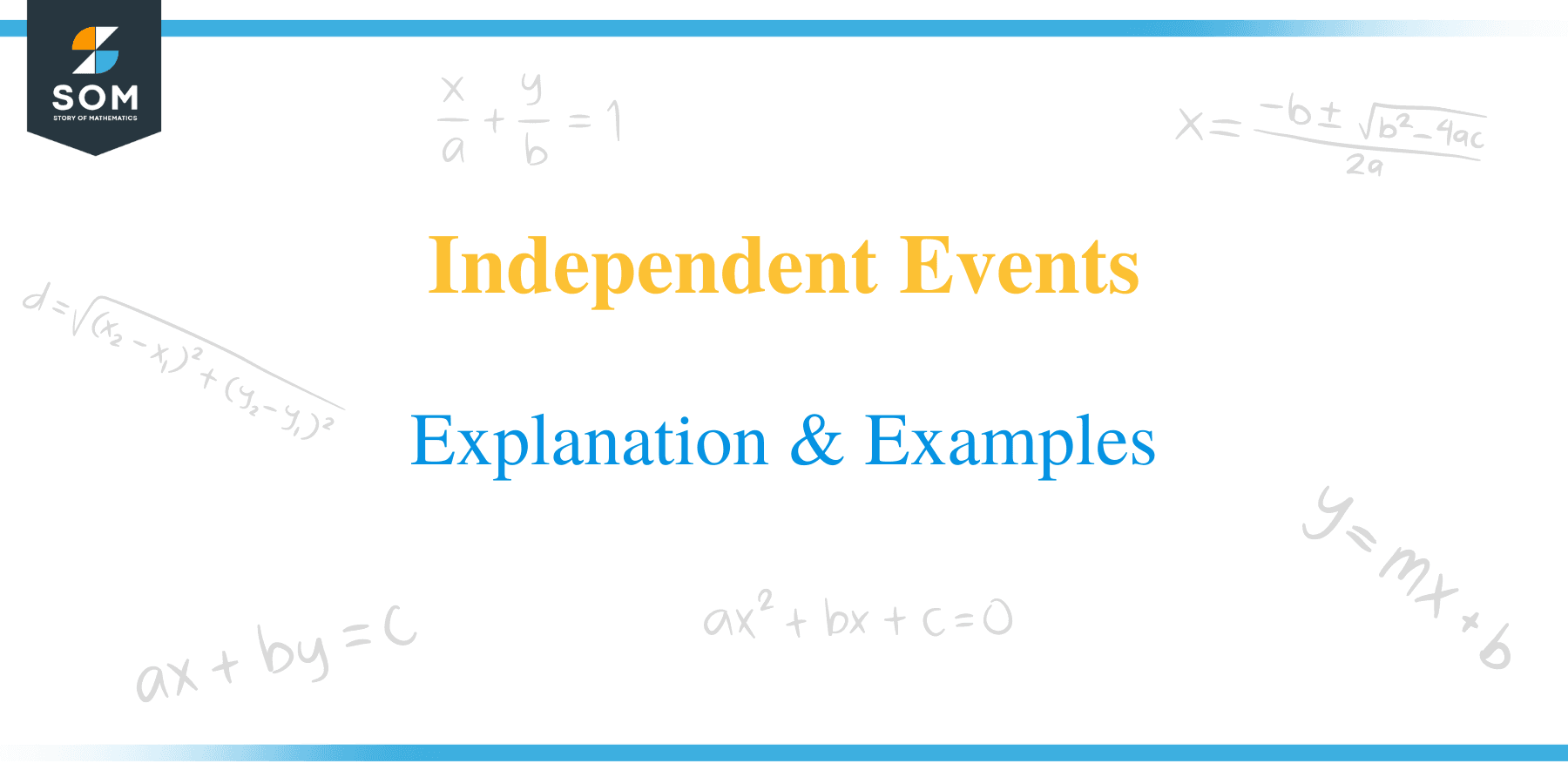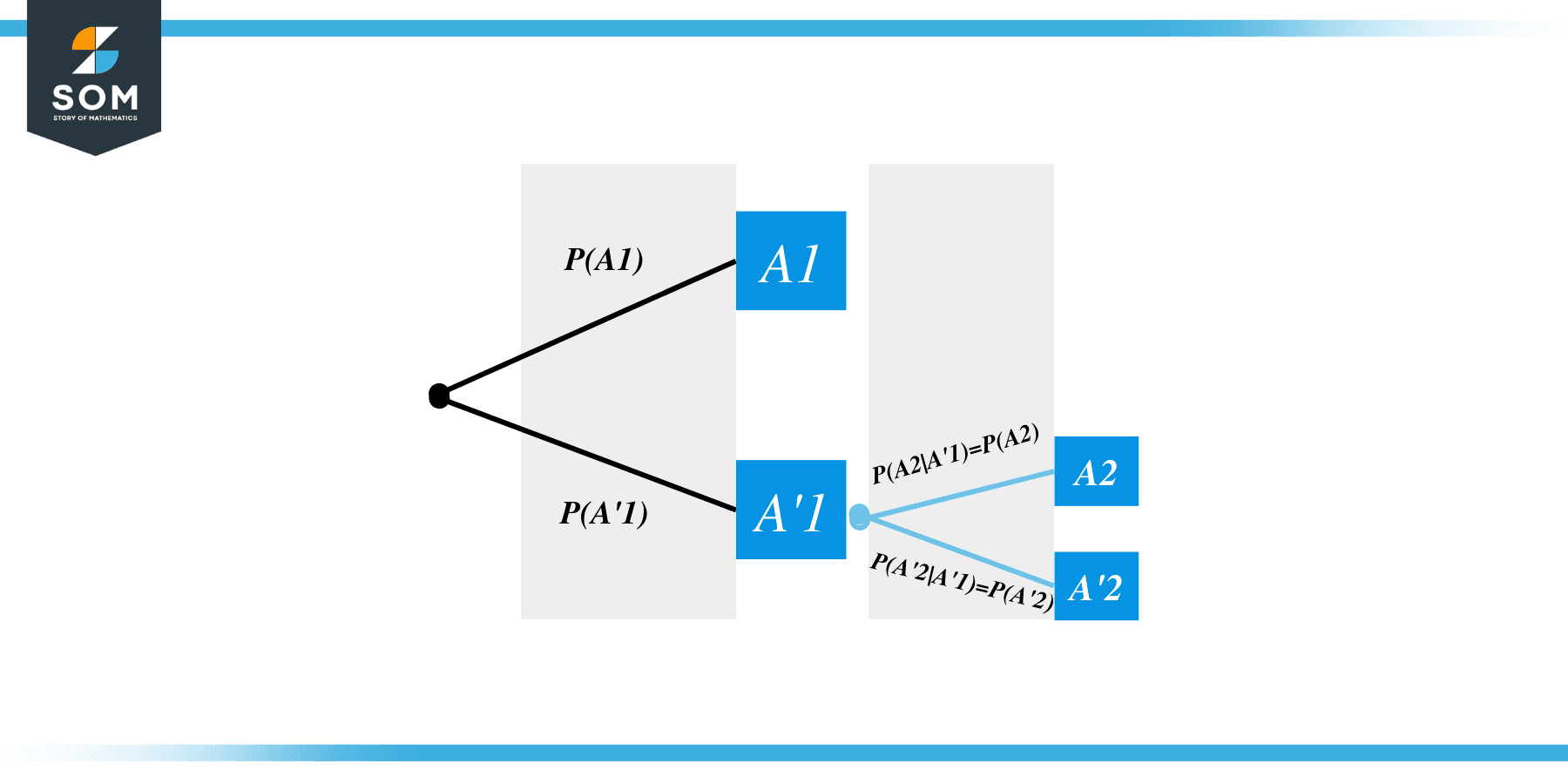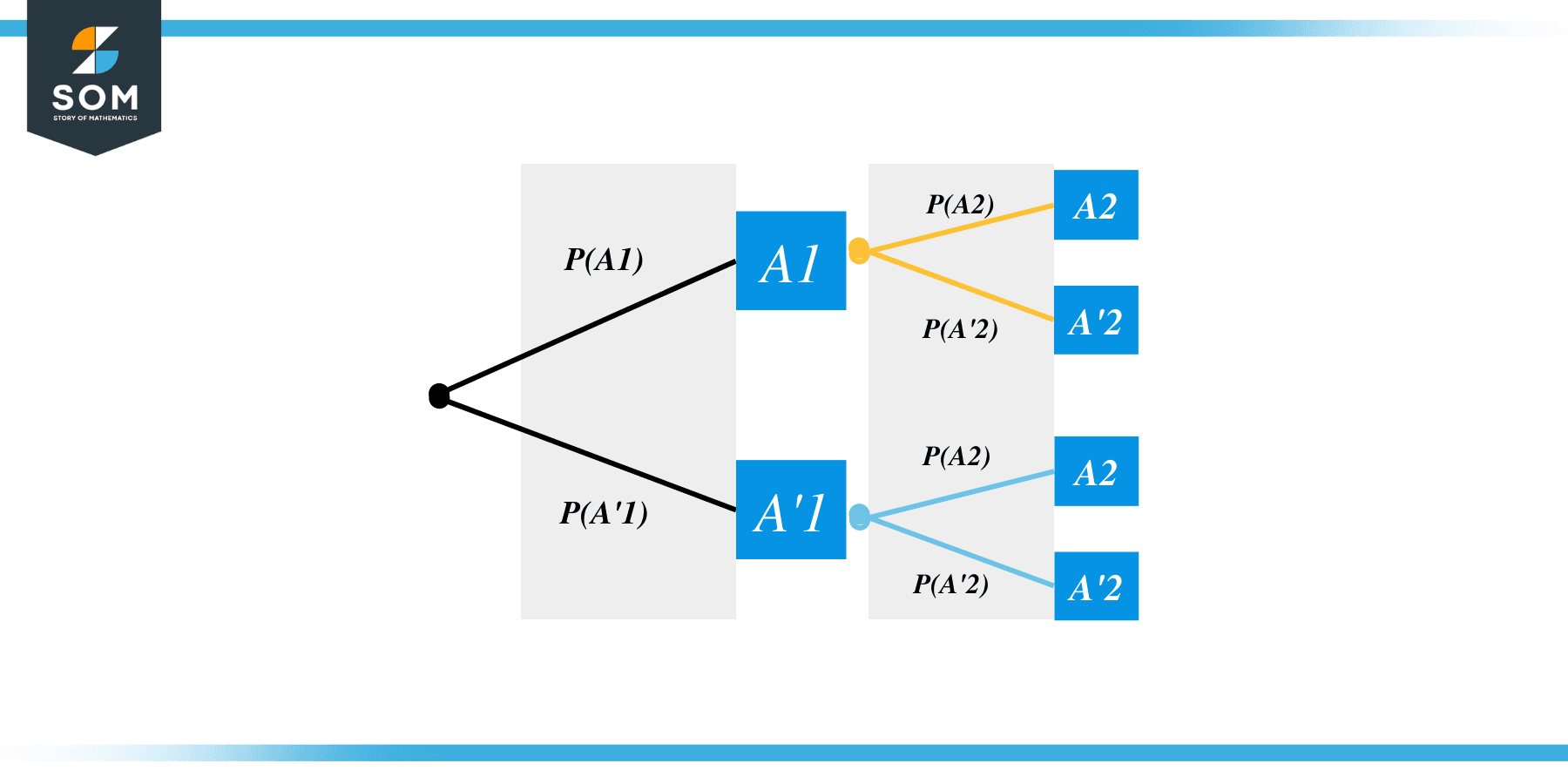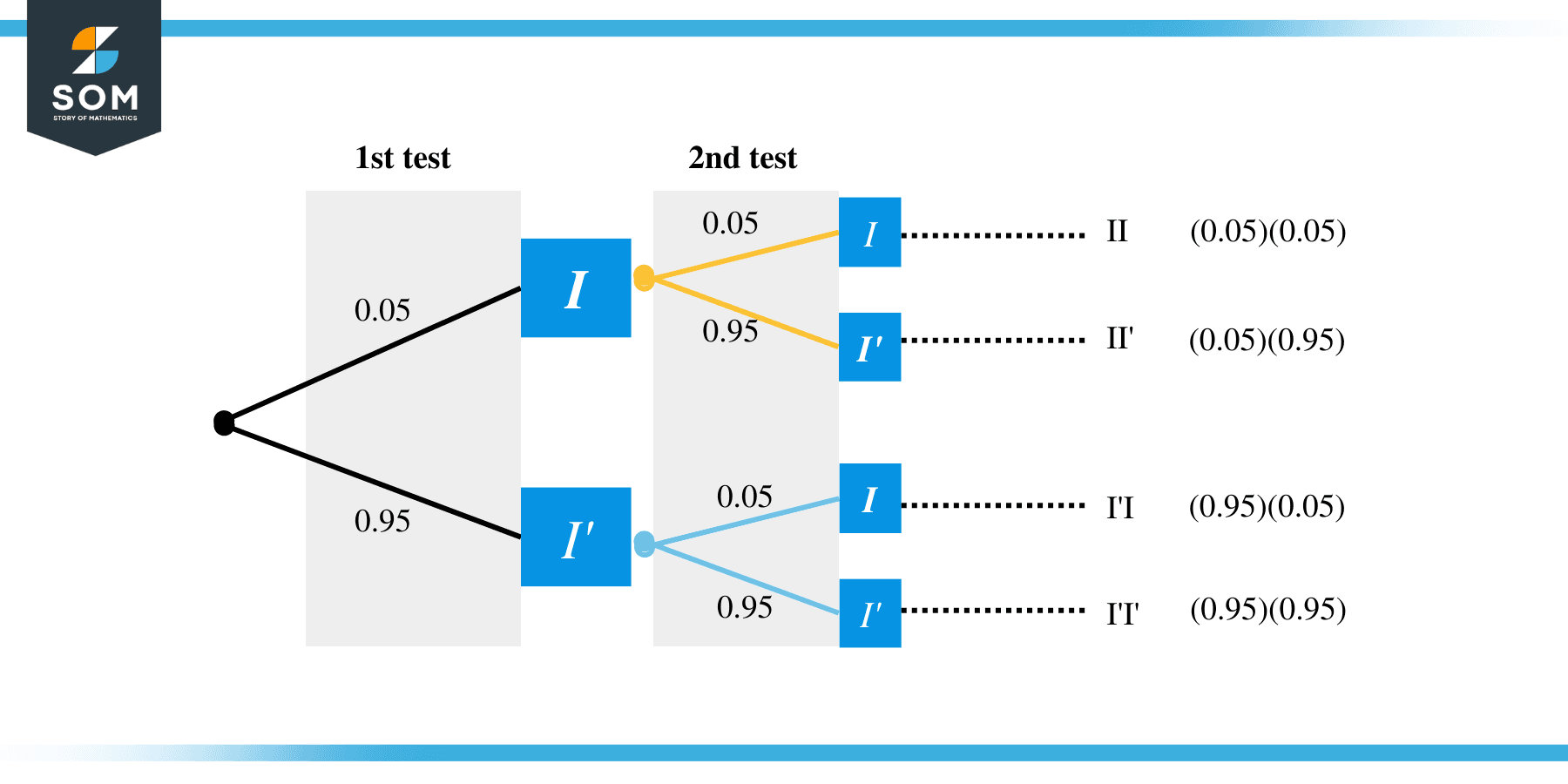- Home
- >
- Independent events – Explanation & Examples
JUMP TO TOPIC
Independent Events – Explanation & Examples
 There are many problems related to probability theory that deal with more than one event. In some cases, the occurrence of one event affects the probability of another event. In others, the probabilities of the events remain unaffected by each other. Such events are termed independent events.
There are many problems related to probability theory that deal with more than one event. In some cases, the occurrence of one event affects the probability of another event. In others, the probabilities of the events remain unaffected by each other. Such events are termed independent events.
Two events are said to be independent if the occurrence of one event has no effect on the probability of occurrence of the other event.
After reading this article, you should understand the following:
- Independent events
- Identifying two events are independent
- Solving problems related to independent events
- Various formulae related to probabilities of independent events
To understand the concept of independent events, it is advisable to refresh the following topics:
What Are Independent Events
 Suppose we toss a coin twice. The probability of getting Heads (or Tails) in the second toss is $\frac12$ irrespective of whether we got Heads or Tails in the first toss. Similarly, if we are given the additional information that the second toss resulted in Heads, it does not change the probability of the first toss, which remains $\frac12$ for both Heads and Tails.
Suppose we toss a coin twice. The probability of getting Heads (or Tails) in the second toss is $\frac12$ irrespective of whether we got Heads or Tails in the first toss. Similarly, if we are given the additional information that the second toss resulted in Heads, it does not change the probability of the first toss, which remains $\frac12$ for both Heads and Tails.
Hence, when we toss a coin twice, both tosses are independent of each other. Similarly, if we roll a die $n$ times (or roll $n$ dice together), each roll is independent of the other since the outcome of one roll cannot affect the outcome of other rolls.
How to Tell If Two Events Are Independent
To analyze whether two events are independent or not, we first need to understand the concept of conditional probability.
Conditional Probability
Conditional probability $P(A|B)$ is the probability of event A given the information that B has already taken place. For any two events $A$ and $B,$ $P(A|B)$ is given as
$P(A|B) = \frac{P(A \cap B)}{P(B)}$
Let’s reconsider an example
Example 1:
We roll a six-sided fair die. Let $E1$ be the event that the outcome is $3$. Let $E2$ be the event that the outcome is odd. Find $P(E1|E2)$.
Solution:
Note that the sample space $S = \{1,2,3,4,5,6\}$ has six elements. Also, $E1=\{3\}$ and $E2 = \{1,3,5\}$ and $E1 \cap E2 = \{3\}$, hence $P(E2) = \frac36$ and $P(E1 \cap E2) = \frac16$. Therefore,
$P(E1|E2) = \frac{\frac16}{\frac36} = \frac13$.
Conditional Probability and Independence
Now that we have the tool of conditional probability with us, we can easily define the concept of Independence mathematically. By definition, $A$ and $B$ are independent if the occurrence of $B$ has no effect on the probability of $A$, and similarly, the occurrence of $A$ does not affect $B$. Using the concept of conditional probability, we can write that $A$ and $B$ are independent if $P(A|B) = P(A)$ and $P(B|A) = P(B)$. Using the formula for conditional probability, we can write
$P(A|B) = \frac{P(A \cap B)}{P(B)} = P(A)$
Hence, if $A$ is independent of $B$, then $P(A \cap B) = P(A)P(B)$.
Similarly, we can show that if $P(A \cap B) = P(A)P(B)$, then $P(B|A) = P(B)$.
Independent Events Definition
Two events are said to be independent if the occurrence of one event has no effect on the probability of occurrence of the other event.
Mathematically, two events $A$ and $B$ are said to be independent if $P(A \cap B) = P(A)P(B)$.
How to Solve Independent Events
Let us consider an example to see how to solve independent events using the above definition.
Example 2: We roll a dice twice. Let us define $E1$ as the event that the first outcome is odd. Let $E2$ be the event that both outcomes are the same. Finally, let $E3$ be the event that the sum of outcomes is even.
1. Are $E1$ and $E2$ independent?
1. Are $E2$ and $E3$ independent?
1. Are $E3$ and $E1$ independent?
Solution:
The sample space for two dice rolls is:
$\{(1,1), (1,2), (1,3), (1,4), (1,5), (1,6),$
$(2,1), (2,2), (2,3), (2,4), (2,5), (2,6),$
$(3,1), (3,2), (3,3), (3,4), (3,5), (3,6),$
$(4,1), (4,2), (4,3), (4,4), (4,5), (4,6),$
$(5,1), (5,2), (5,3), (5,4), (5,5), (5,6),$
$(6,1), (6,2), (6,3), (6,4), (6,5), (6,6)\}$.
The event $E1$ can be written as
$E1 = \{1,1), (1,2), (1,3), (1,4), (1,5), (1,6),$
$(3,1), (3,2), (3,3), (3,4), (3,5), (3,6),$
$(5,1), (5,2), (5,3), (5,4), (5,5), (5,6)\}$.
$E2$ can be written as
$E2 = \{(1,1), (2,2), (3,3), (4,4), (5,5), (6,6)\}$. And $E3$ is written as
$E3 = \{(1,1), (1,3), (1,5), (2,2), (2,4), (2,6),$
$(3,1), (3,3), (3,5), (4,2), (4,4), (4,6),$
$(5,1), (5,3), (5,5), (6,2), (6,4), (6,6)\}$.
Since there are $36$ members of the sample space, $18$ members in $E1$, $6$ members in $E2$ and $18$ members in $E3$, hence
$P(E1) = \frac{18}{36} = \frac12$
$P(E2) = \frac{6}{36} = \frac16$, and
$P(E3) = \frac{18}{36} = \frac12$.
1)
To check if $E1$ and $E2$ are independent, we first find $E1 \cap E2 = \{(1,1), (3,3), (5,5)\}$. There are three members in $E1 \cap E2$, hence
$P(E1 \cap E2) = \frac{3}{36} = \frac{1}{12}$.
Now $P(E1) \times P(E2) = \frac12 \times \frac16 = \frac{1}{12}$.
This shows that $P(E1 \cap E2) = P(E1)P(E2)$, hence $E1$ and $E2$ are independent events.
2)
We now find $E2 \cap E3 = \{(1,1), (2,2), (3,3), (4,4), (5,5), (6,6) \}$. Hence,
$P(E2 \cap E3) = \frac{6}{36} = \frac16$.
Now $P(E2) \times P(E3) = \frac16 \times \frac12 = \frac{1}{12}$.
We note that $P(E2 \cap E3) \neq P(E2) \times P(E3)$, hence $E2$ and $E3$ are dependent events.
3)
We note that $E1 \cap E3 = \{(1,1), (1,3), (1,5), (3,1), (3,3), (3,5), (5,1), (5,3), (5,5)\}$.
$P(E1 \cap E3) = \frac{9}{36} = \frac14$.
Now, $P(E1) \times P(E3) = \frac12 \times \frac12 =\frac14$.
Since, $P(E1 \cap E3) = P(E1)\times P(E3)$, hence $E1$ and $E3$ are independent events.
Independent Events Formula
We list the various relations between $A$ and $B$, if $A$ and $B$ are independent
1. $P(A|B) = P(A)$
2. $P(B|A) = P(B)$
3. $P(A \cap B) = P(A)P(B)$
4. $P(\textrm{NOT} \, A \cap \textrm{NOT}\, B) = P(\textrm{NOT}\, A)P(\textrm{NOT} \,B)$
5. $P(A \cup B) = P(A) + P(B) – P(A)P(B)$
Example 3:
A probability exam contains two Questions Q1 and Q2. The probability that a student would solve the first question accurately is $60\%$, and the probability of solving the second question correctly is $30\%$. Both questions are independent of each other. Find the probability
1. A student will solve both questions correctly.
2. A student will solve both questions incorrectly
3. A student will at least solve one question correctly.
Solution:
Let $E1$, $E2$ be the events that a student correctly solves Q1 and Q2, respectively.
1)
We are interested in the probability $P(E1 \,\textrm{AND}\, E2) = P(E1 \cap E2)$. Since, $E1$ and $E2$ are independent, hence $P(E1 \cap E2) = P(E1)\times P(E2) = 0.6 \times 0.3 = 0.18 = 18\%$
2)
The probability that a student will incorrectly solve the first question is $1 – P(E1) = 0.4$.
The probability that a student will incorrectly solve the second question is $1 – P(E2) = 0.7$.
Since both questions are independent, hence
$P(\textrm{Both questions incorrect}) = (1 – P(E1)) \times (1-P(E2)) = 0.4 \times 0.7 = 0.28$.
3)
We are interested in the probability $P(E1 \,\textrm{OR}\, E2) = P(E1 \cup E2)$. Note that, in this context, OR means either $E1$ or $E2$ or both. Using the formulae for the independent events discussed above, we can write
$P(E1 \cup E2) = P(E1) + P(E2) – P(E1)P(E2)$
$P(E1 \cup E2) = 0.6 + 0.3 – (0.6 \times 0.3) = 0.72 = 72\%$
Example 4:
You are travelling from location A to location B using a bus and a train. The probability that the bus will get delayed is $10\%$, and the probability that the train will get delayed is $5\%$. Both events are independent. Find the probability that
1. You will experience a delay during your travelling.
2. You will get on time to location B
Solution:
Let $E1$ represent the event that the bus gets delayed, and $E2$ is the event that the train gets delayed.
1)
We will experience a delay if either the bus gets delayed or the train gets delayed or both get delayed. So, we are interested in finding the probability $P(E1 \,\textrm{OR}\, E2) = P(E1 \cup E2)$. Using the formulae for the independent events, we can write
$P(E1 \cup E2) = P(E1) + P(E2) – P(E1)P(E2)$
$P(E1 \cup E2) = 0.1 + 0.05 – (0.1)(0.5) = 0.145 = 14.5\%$
2)
To get on time, we need that neither the bus gets delayed nor the train gets delayed. Hence, we need to find the probability
$P(\textrm{NOT} \, E1 \textrm{AND}\, \textrm{NOT}\, E2) = P(\textrm{NOT} \,E1 \cap \,\textrm{NOT} \,E2)$.
$P(\textrm{NOT} \,E1) = 1 – P(E1) = 1 – 0.1 = 0.9$.
$P(\textrm{NOT} \,E2) = 1 – P(E2) = 1 – 0.05 = 0.95$.
Since, both events are independent
$P(\textrm{NOT} \,E1 \cap \,\textrm{NOT} \,E2) = P(\textrm{NOT} \,E1) \times P(\textrm{NOT} \,E2)$.
$P(\textrm{NOT} \,E1 \cap \, \textrm{NOT}\, E2) = 0.9 \times 0.95 = 0.855 = 85.5\%$
Example 5:
A message is transmitted from Node-A to Node-B through three intermediate nodes. The message will be successfully transmitted only if all the intermediate nodes are working. The probability that an intermediate node will fail is $1\%$. All nodes are independent of each other. What is the probability that you will not successfully transmit the message?
Solution:
We first find the probability that you will successfully transmit the message. For successful transmission, we need all nodes to be working. The probability that a node will not fail is
$P(\textrm{Node does not fail}) = 1 – P(\textrm{Node fails}) = 1 – 0.01 = 0.99$.
Since all nodes are independent so the probability that node 1 AND node 2 and node 3 do not fail = $0.99 \times 0.99 \times 0.99 = 0.97$.
Hence, the message will be successfully transmitted with a probability of $97\%$.
Accordingly, $P(\textrm{message is not successful}) = 1 – P(\textrm{message is successful}) = 1 – 0.97 = 0.03 = 3\%$.
Independent Events and Tree Diagrams:
There are many scenarios of interest where we repeat the same experiments many times. For instance, tossing a coin three times or rolling a die four times, etc. Tree diagrams offer a useful tool to analyze such events. Let us consider how to make tree diagrams when we know that the multiple attempts or trials of the same experiment are independent of each other.
For simplicity, we consider an experiment with two outcomes only. Let’s call those $A$ and $A’$. When the experiment is performed the first time, we can have two possible outcomes, as shown in the tree diagram below. We label the branches of the tree diagram with the probabilities of the events $A1$ and $A’1$, where $1$ denotes that the first attempt.

Now we perform the same experiment again. If the outcome of the first attempt was $A$, then we get a tree diagram as shown below. Note that, in this case, we are drawing the branches of the tree diagram for the case when the first outcome is known to be $A$. Hence the branches are labelled with probabilities $P(A2|A1)$ and $P(A’2|A1)$. However, since the trials are known to be independent, hence $P(A2|A1) = P(A2)$ and $P(A’2|A1) = P(A’2)$.

Similarly, we draw the branches for the case when the first attempt was $A’$ as shown below:

The overall tree diagram is as follows:

Note that the leaves (i.e., endpoints or terminal nodes) of the tree diagrams represent mutually exclusive events. Let’s say we wish to find the probability of the event $A1A2 = A1 \cap A2$, i.e., the first attempt resulted in $A$ and the second attempt also resulted in $A$. Since the trials are independent, hence $P(A1 \cap A2) = P(A1)\times P(A2)$. In other words, to find the probability of any event given by the terminal node of the tree diagram, we simply multiply the probabilities along the branches. Also, if we are interested in the probability of the compound event, say $A1A2 \cup A1A’2$, then we simply add the probabilities $P(A1A2)$ and $P(A1A’2)$ as the events are mutually exclusive.
Example 6:
A factory is producing light bulbs. The probability that a light bulb will be defective is $1\%$ and is independent of all other bulbs. A quality assurance manager randomly chooses two light bulbs out of a batch and tests them. Draw a tree diagram and find the following probabilities
1. Both bulbs are defective.
2. At most, one bulb is defective.
Solution:

1) From the tree diagram, we note that the probability of both defective, i.e., $P(DD) = (0.01)^2$.
2) The probability of at most one defective is $P(DD’) + P(D’D) + P(D’D’) = 2(0.99)(0.01) + (0.99)^2$.
Sampling with replacement and independent events:
In sampling experiments, we have a collection of $n$ objects, and we sample from the collection $k$ times. There are two possible ways of sampling
1. We replace the sampled object in the collection (i.e., sampling with replacement)
2. We do not replace the sample object in the collection.
When we are doing sampling with replacement, then the outcomes of each sample does not affect the probabilities of other samples. Hence each trial in sampling with replacement is an independent trial. Let us consider an example:
Example 7: Let’s suppose there are ten balls in a box. Four balls are Green(G), and six balls are Red(R). If we draw two balls, one at a time, with replacement, find the probability of the following events:
- Both Balls are Green.
- The first ball is Red and the second is Green.
- At least one ball is Red.
Solution:
Let $G1$ and $R1$ be the events that the first ball is Green/Red respectively. Similarly, let $G2$ and $R2$ be the events that the second ball is Green/Red. Since we are dealing with sampling with replacement so $P(G1) = P(G2) = \frac{4}{10} = \frac25$ and $P(R1) = P(R2) = \frac{6}{10} = \frac35$.
1)
$P(\textrm{Both balls are Green}) = P(G1 \,\textrm{AND} \, G2) = P(G1 \cap G2)$. Since the trials are independent, so $P(G1 \cap G2) = P(G1) \times P(G2) = \frac25 \times \frac25 = \frac{4}{25}$.
2)
$P(\textrm{First Red and Second Green}) = P(R1\, \textrm{AND}\, G2) = P(R1 \cap 2)$. Since the trials are independent, so $P(R1 \cap G2) = P(R1) \times P(G2) = \frac35 \times \frac25 = \frac{6}{25}$.
3)
We use the fact that $P(\textrm{at least one ball is Red}) = 1 – P(\textrm{both balls are gGeen})$. Hence,
$P(\textrm{at least one ball is Red}) = 1 – \frac{4}{25} = \frac{21}{25}$.
Practice Questions:
1.We toss a coin three times. Let $E1$ be the event that the first toss results in Heads. Let $E2$ be the event that we get more Heads than Tails. Are $E1$ and $E2$ independent?
2.Team-A needs to play two matches in a competition. Both matches are independent of each other. The probability of winning the first match is $65\%$, and winning the second match is $32\%$. What is the probability that Team-A
a) wins both of the matches?
b) losses of the matches?
c) wins at least a single match?
3. The control room of a nuclear reactor is supplied power from many independent sources so that if one source fails, the other takes over. If the probability that a supply fails is $5\%$, how many supplies do we need to reduce the probability of the power cut of the control room to be less than $0.00001$?
4. In a given population, the probability that a given person is infected with a particular disease is $5\%$. A doctor randomly tests two people out of the population. If both tests are assumed to be independent, draw a tree diagram and find the probability that at least one person will be infected.
5. Two cards are picked randomly, with replacement, from a regular deck of 52 playing cards. 4 cards are Kings, and 4 cards are Queens in a deck. What is the probability that one King and one Queen are chosen?
Answer Key
1.No, $P(E1) = \frac12$, $P(E2) = \frac12$, $P(E1 \cap E2) = \frac38 \neq P(E1)\times P(E2)$.
2.
a) $20.8\%$
b) $23.79\%$
c) $76.2\%$
3. $(0.05)^n < 0.00001$
$n log(0.05) < log(0.00001)$
$n > \frac{log(0.00001)}{log(0.05)} > 3.84$.
Note that $log(0.05)$ is a negative number, so the inequality is reversed.
4.

The probability of at least one infected is $P(II) + P(II’) + P(I’I) = (0.05)^2 + 2(0.05)(0.95)$.
5. $P(\textrm{one King and one Queen}) = P(\textrm{1st King and 2nd Queen}) + P(\textrm{1st Queen and 2nd King})$
$\qquad \qquad \qquad \qquad \qquad \qquad \quad = \frac{4}{52}\times\frac{4}{52} + \frac{4}{52}\times\frac{4}{52}$
$\qquad \qquad \qquad \qquad \qquad \qquad \quad = \frac{2}{169}$
